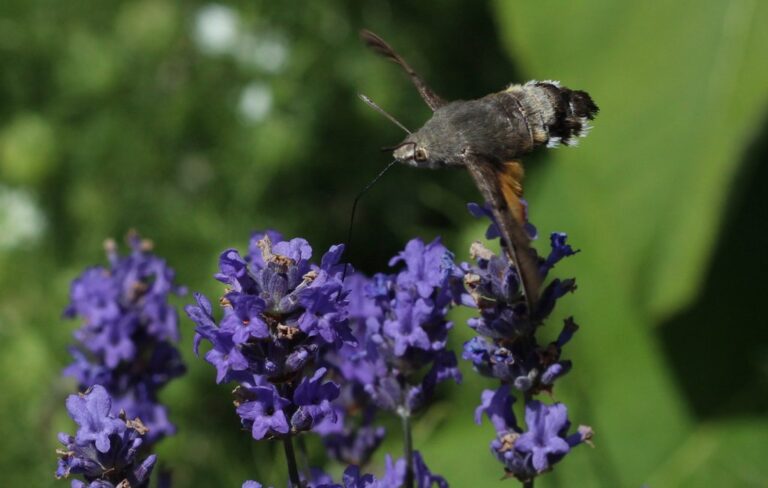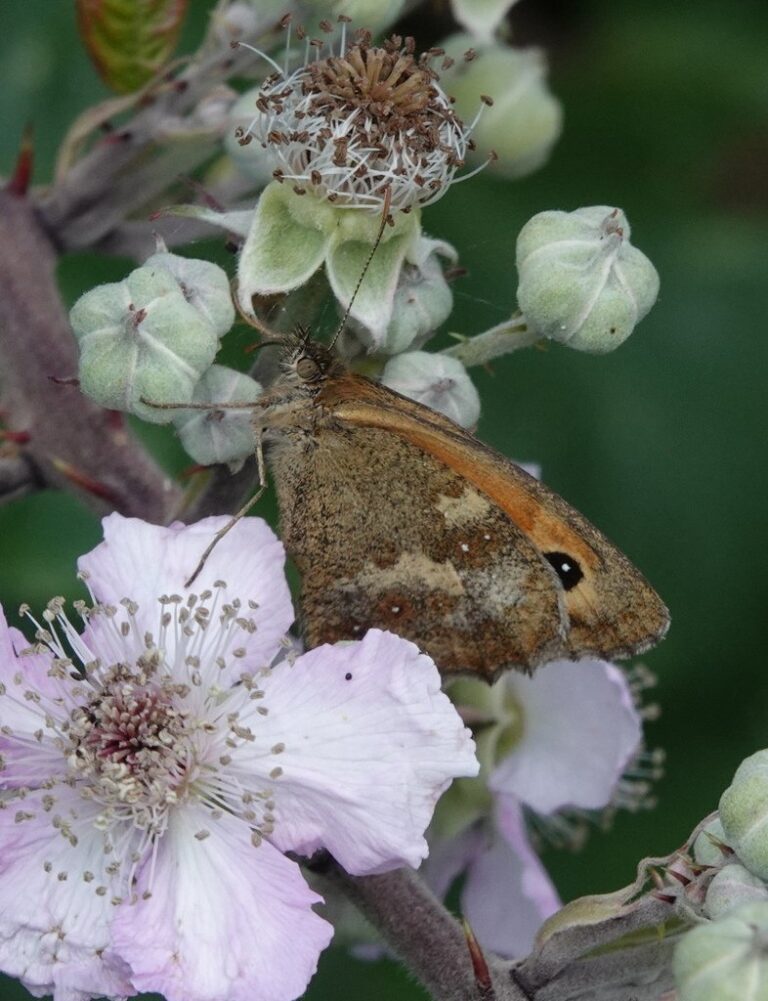(Small tortoiseshell on lavender)
It is the beginning of the summer holidays and time to count the summer butterflies which have just emerged.
How many does there need to be before we decide to count them? One or two seems hardly worth the effort. Or we resign ourselves to the uncertainty of their appearance and our struggle to recognise them before they flit next door. So can we tempt them to linger? Yes, we can plant their favourite nectar!
Top 20 flowers
Butterfly Conservation Sussex have a Top 20 list of flowers. To be sure of including the favourites of several different butterflies, and until early autumn, we need to choose about six.
Planting in clumps reduces the flying time for insects. Allowing them to interweave as they expand or drifting 2 together imitates the closely knitted texture of a meadow but without the smothering competition of grasses on fertile garden soil.
However no butterfly will stay if they cannot keep warm enough. Flowers for butterflies need to be in the hottest part of the garden.
Here are 5 ways to find more warmth:
- In sheltered gardens the sunniest corner is obviously the warmest. This is useful as it is a place which can be too hot for us sit. To see the difference in a place which is hot enough for the Adonis Blue to breed we can go to the bottom of the steep valley of Malling Down. The steep slopes reflect a lot of extra heat like walls do. A corner with 2 walls or a very steep bank or a terraced slope are a lot warmer for a butterfly than an island bed.
- For most of us though, by the South coast it is not so simple. In order to see butterflies spend more time feeding we need to shield them from constant draughts. So the south facing corner may also face the strongest breeze from the beach. If this is the only corner with full sun we can begin by planting a hedge on the opposite boundary which faces north-east. This is much more effective at slowing down and lifting the wind than a fence can and also gives butterflies and moths somewhere to shelter from the rain. The more twiggy from clipping the less draughty it will be and better for a nest as well.
- In the meantime we can include some shrubs among the flowers. We can then watch the butterflies choose the warmest niche between the bushes or between the branches. As butterflies can detect a rise of 0.1 degrees we can learn a lot by noticing where they stop most often. They will adjust their position several times to bask on a leaf or a flower head to find the best angle to the sun for the most heat. If we sit nearby a Red Admiral, Peacock or Comma may sit on our arm. If there is no wall behind the border a row of stones would become another place to bask. A dwarf hedge eg a herb around the front of the border would trap more warmth in the ground.
- Shrubs in a mixed border need to be just low enough to avoid shading the butterfly flowers. If a Buddleia is pruned to low buds in mid spring it is much easier to see the butterflies and to dead head it for a second flowering in September.The Community Garden in East St might provide some inspiration (Open on Wed and Sat mornings in summer) or Great Dixter.
- In some gardens the draughts and backwash around the house come from all directions at once. So a border which is sunny for the whole morning until after lunch could give a better result. Against a south-east or east facing wall or fence it would be sheltered from the sea wind (from the south-west). In Chalvington Field on the windy hilltop the most butterflies have been on the flowers in the east facing thicket. In Micklefield a Comma basked by the east facing hedge.
The best solution of all is to plant 2 rows of tall shrubs, with flowers and a path between. This is the most rewarding kind of footpath to find on a country walk. We can feel the extra warmth and the larger numbers of butterflies flit from side to side. If the path is straight, some tall plants at the front of the border can divide the space into sheltered bays. Or a path which curves around big clumps would do the same. Planting flowering shrubs of different sizes will also provide plenty of sheltered sunny nooks. If you already have a hedge you can cut it into humps and dips, waves or topiary. As the shadows move there is always a new warmer niche to bask in.
There are double hedgerow paths like this from Princess Drive green up to Grand Avenue, where there are 7 butterfly species at present; and another at the top of Cradle Hill Rd with Jersey Tiger moths.
MEDIUM and SMALL SHRUBS for butterflies and moths in a flower border:
- Abelia . Dainty evergreen leaf. White with pink flush. HHm*
- Lavender . A tall variety gives more shelter. Plant well back from a path as it will not shoot from brown wood. HHm*
- Honeysuckle . Can be twined up a stake and clipped.
- White Jasmine. Vigorous but can be pruned as much as you wish. HHm*
- Hebe / Veronica. Midsummer Beauty (pale violet and white) and later Great Orme (pink and white) have good nectar.
- Sage but not a non-flowering culinary one! Evergreen.
- Plumbago. The shrubby one. Ceratostigma willmottianum. Bright blue. HHm*
- Hyssop. Blue or white. Evergreen.
*HHm: Hummingbird Hawkmoth in our garden but only on the warmest blooms.
The Big Butterfly Count finishes on 6th August. We can continue all year with the Garden Butterfly Survey.
Melene
You can find out more about attracting wildlife to your garden on the “Metre Square for wildlife” page
If you would like to share a story about your wildlife garden or sightings, you can contact us here (or email info@renaturingseaford.org). We would love to hear from you.










